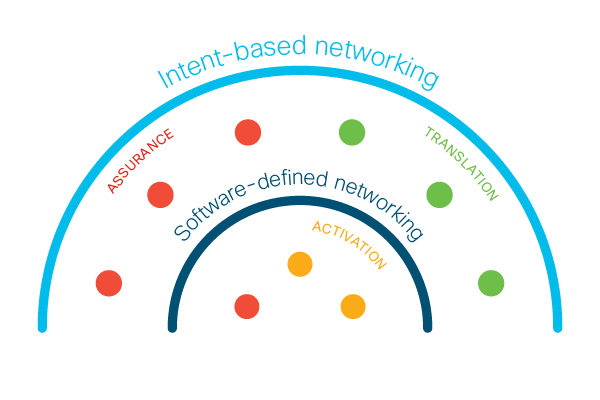The 5 Technologies that will Change Networking in 2019
The networking field is changing fast. This year, several emerging technologies will fundamentally impact how businesses and their employees connect....
2 min read
Natalie : Jun 4, 2018 8:58:06 AM

In a previous blog post Cisco Engineering teams looked “under the hood” at intent-based networking.
A common question we receive is: “What is the relationship of software-defined networking (SDN) to intent-based networking?” In this blog we:
What is SDN?
Software defined networking (SDN) developed out of the need to automate, scale and optimize networking for applications that may be provided either via an enterprise datacenter, a Virtual Private Cloud (VPC), or as-a-service (public cloud).
We view SDN as a centralized approach to the management of network infrastructure. SDN provides a number of important benefits for network and IT operators through controller-enabled, network visibility and automation including:
Beyond automation: What are the limits of SDN?
While software-defined networks (SDNs) have largely automated the process of network management, organizations now require even greater capabilities from their networks in order to manage their own digital transformation.
For example, IT teams should expect:
These are some of the motivations for moving beyond SDN towards intent-based networking.
How intent-based networking builds on SDN
SDN is a foundational building block of intent-based networking. The good news for SDN practictioners is that intent-based networking addresses SDN’s shortfalls. Intent-based networking adds context, learning and assurance capabilities, by tightly coupling policy with intent.
Figure 1: How SDN compares to intent-based networking
“Intent” enables the expression of both business purpose and network context through abstractions, which are then translated to achieve the desired outcome for network management. Whereas, SDN is purposely focused on instantiating change in network functions.
In our previous post we introduced the three foundational elements of intent-based networking: translation, activation and assurance (Figure 2).
Figure 2: Closed-loop feedback in an intent-based network delivered by Cisco architectures
WHAT’S THE OUTCOME?
The expanded capabilities of intent-based networking over SDN provide operators with greater flexibility in how to act:
In summary, intent-based networking augments SDN, by delivering the network agility that organizations require to accelerate their digital transformation. By adding important capabilities, such as translation and assurance, a closed loop intent-based networking platform helps IT deliver continuous agility, reliability and security to significantly improve IT and business outcomes.
Published with permission from blogs.cisco.com
Thanks to advances in AI, companies of all sizes can transform their wireless networking with WiFi that is predictable, reliable and measurable. ...

With the soaring number of mobile and IoT devices and onslaught of new apps that businesses are faced with on their wireless network, it is time for...